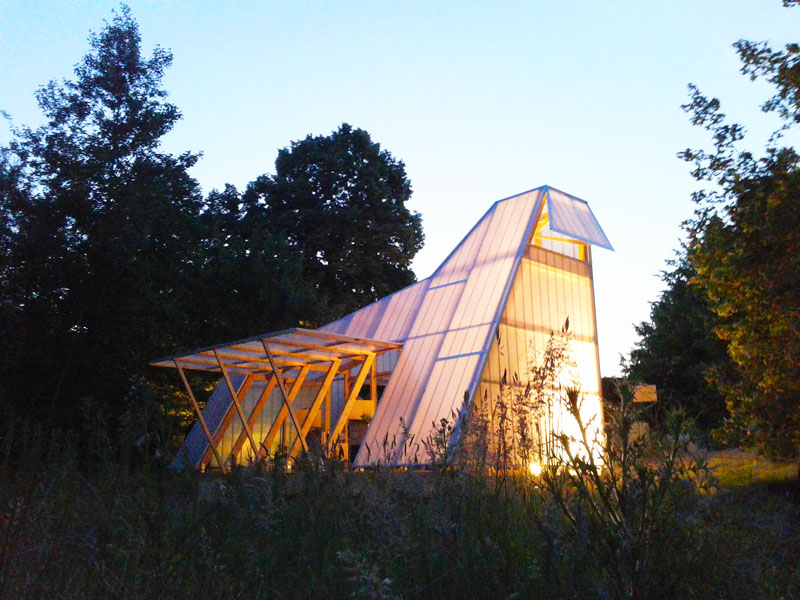
Living Archive Course Greenhouse, construction grade pine wood, polycarbonate paneling, aluminum, steel, 6.4mX3.2mX4.0m
Built with students as final requirement of the Living Archive Course, Münster School of Architecture, Summer Semester 2014

"In the coming decades, global agriculture faces the prospect of a changing climate, as well as the known challenge of continuing to feed the world's population, projected to double its present level of five billion by about the year 2060. The prospective climate change is global warming (with associated changes in hydrological regimes and other climatic variables) induced by the increasing concentration of radiatively active greenhouse gases. Climate change could have far-reaching effects on patterns of trade among nations, development, and food security. Despite technological advances such as improved crop varieties and irrigation systems, weather and climate are still key factors in agricultural productivity." - Research Report No. 3. Oxford: University of Oxford, Environmental Change Unit, 1996
"Since I found that one should make a cast shadow from a 3-d thing, any object whatsoever – just as the projecting on the sun of the earth makes two dimensions – I thought that by simple intellectual analogy, the fourth dimension could project an object of three dimensions, or to put it in another way, any 3d object which we see dispassionately is a projection of something 4d, something we are not familiar with. It is a bit of sophism, but it still was possible." - Marcel Duchamp in conversation with Pierre Cabanne, 1966
The Living Archive Course reviews the future of archiving natural history by defining the "greenhouse" in the context of "climate change".
We explored how both the individual and collective definitions of archive, institutional memory, site-specificity, and material economies regard to global warming and climate induced migration. Reviewing these definitions serve as probes to consider and give alternative notions of how these conditions (social, atmospheric, and geographic) are changing the ways we see and build cultural and spatial production.
In order to mediate these complex issues we consider and develop an architectural archetype - the greenhouse - as a loose term, as a ready-made and boundary object about archival spaces and future landscapes. For more information see Living Archive Course Tumblr
Course Concept: Luis Berríos-Negrón (based on Site Specific Greenhouse Superstructure project by Paramodular)
Production design for greenhouse construction: Paramodular (Luis Berríos-Negrón and Miguel Prados Sánchez)
Reserach, Development, and Fabrication by 4th and 6th semester Students of the Münster School of Architecture: Genzmer, Vanessa / Schulte, Martin / Kerstgens, Jonas / Engelhardt, Ronja / Gordon, Steven / Backhaus, Reda / Beckers, Hendrick / Bühner, Jana / Corbach, Leena / Foer, Kristina / Hanke, Miriam / Herges, Christin / Klimushkin, Konstantin / Lehman, Markus / Lehmann, Ivonne / Limar, Alexandra / Manegold, Kyra / Merziglod, Frederic / Millentrup, Viktoria / Moghaddam, Ryma / Puller, Fabian / Rochel, Anna / Rymer, Michaela, with Teaching Assistant: Loránd Mittay
Visiting Lecturers and Critics: Prof. Ulrich Schurr, Ion Sørvin (N55), Eva Wilson, Hans-Jürgen Commerell, Dunya Bouchi, Stephen Form, Miguel Prados Sánchez.
Very Special Thanks to Prof. Julia Bolles-Wilson, Prof. Victor Mani, and Fr. Jutta Uthmann.
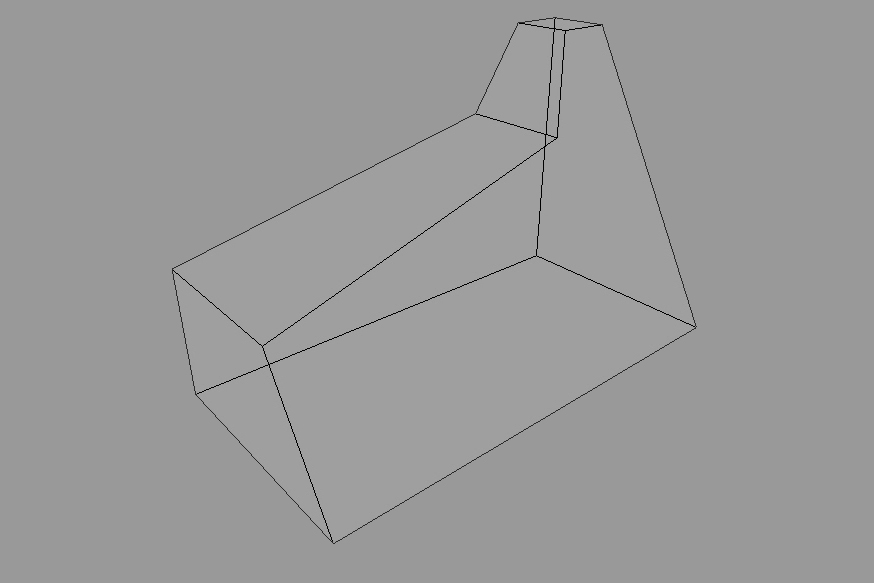
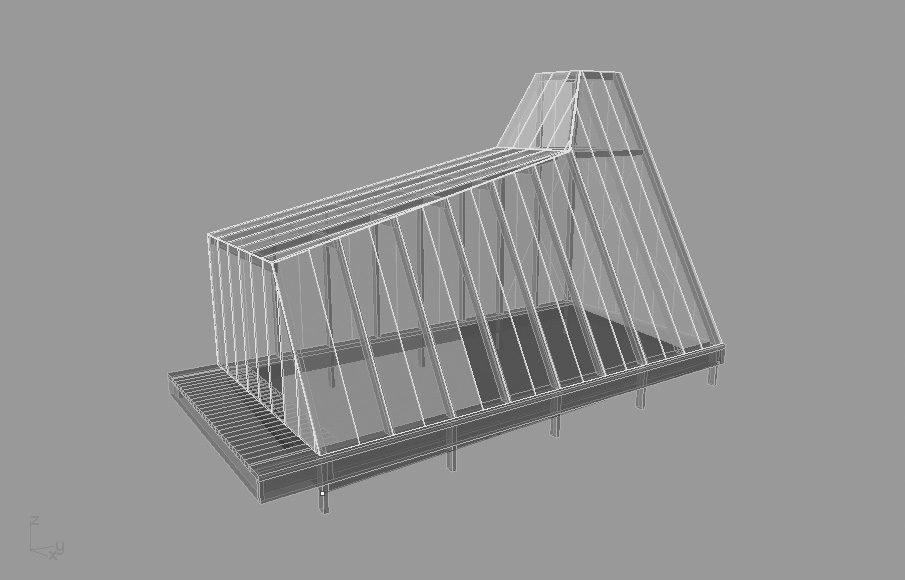
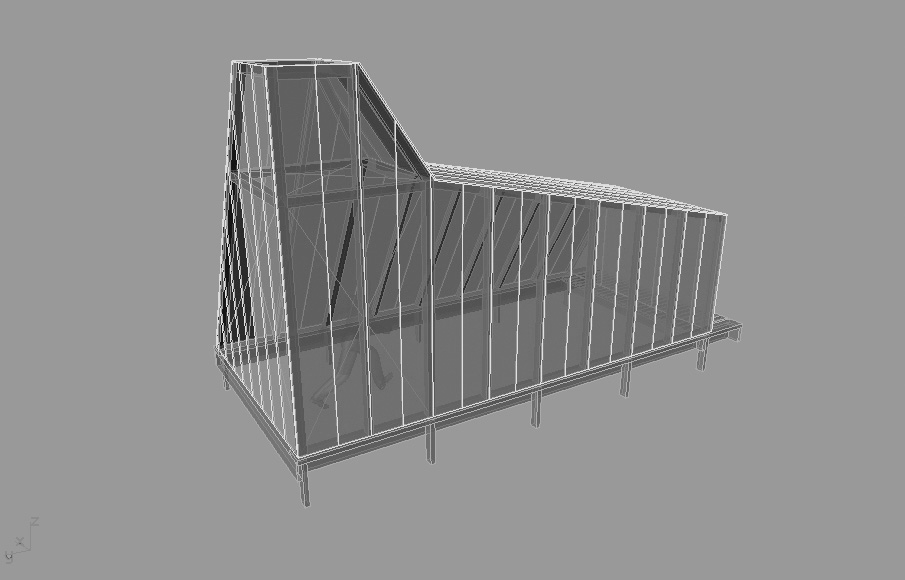
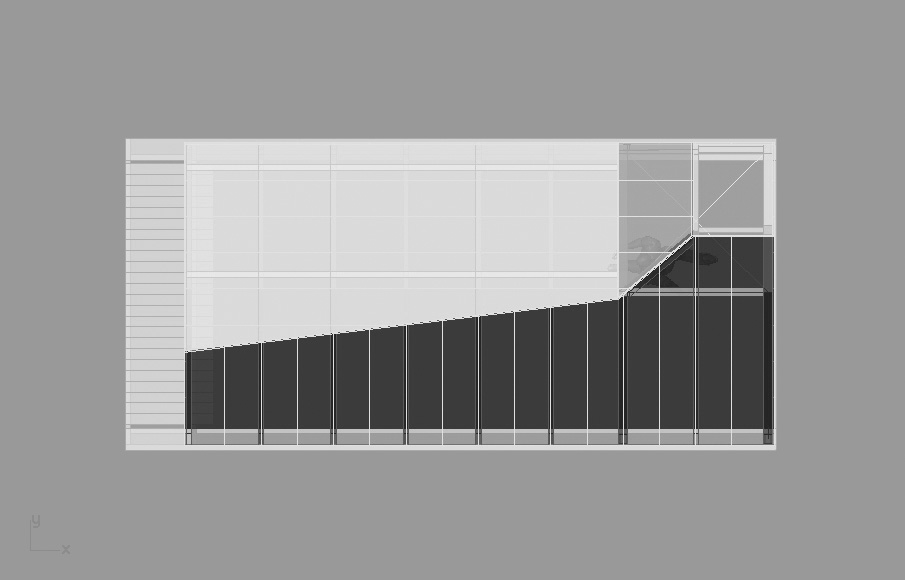
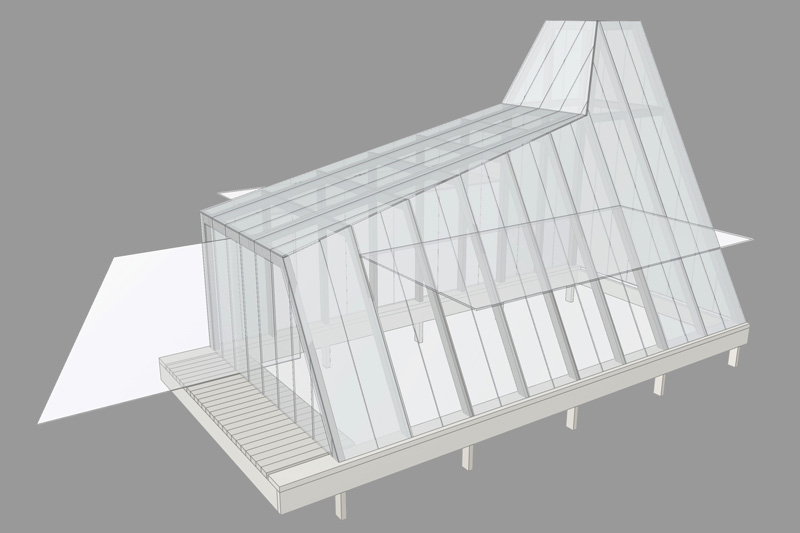
photos below by Miguel Prados Sanchez

